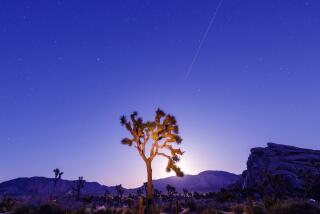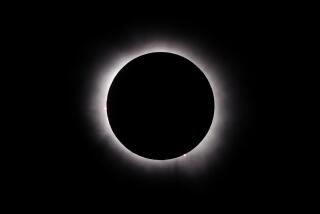Geminid meteor shower peaks Friday night: How to catch the show

The Geminid meteor shower is peaking Friday night, and you won’t want to miss it. It is one of the most prolific showers of the year -- and also one of the weirdest.
Under perfect viewing conditions, skywatchers can hope to see 100 to 120 meteors per hour during the Geminid peak. Unfortunately, conditions are not perfect this year. The moon is getting close to full and its light wll block out some of the dimmer meteors.
But don’t let that stop you from taking in the show. NASA says Geminid meteors are so bright that about half of them will still be visible even by the light of the moon. The meteors should start shooting across the sky around 9 or 10 p.m. local time. This year, the very best time to see them is after 4 a.m. local time, between moonset and sunrise.
Almost all of the major, annual, meteor showers occur when the Earth passes through a stream of debris left in the wake of a comet, but the Geminids are a bit different. Their parent is a rocky, asteroid-like body called Phaeton 3200 with no tail, and which does not appear to shed enough debris to cause the annual shower.
“The Geminids are my favorite because they defy explanation,” said Bill Cooke, who heads up NASA’s Meteoroid Environment Office, in a statement. “Of all the debris streams Earth passes through every year, the Geminids are by far the most massive. When we add up the amount of dust in the Geminid stream, it outweighs other streams by factors of 5 to 500.”
For the best view of the Geminid meteor shower, head away from city lights, and then lay down on your back, and get comfortable. You’ll want to give your eyes about 45 minutes to adjust to the darkness. Then just look up and enjoy.
If heading out into the cold of a December night seems daunting, don’t worry. NASA has you covered. Cooke and his team are hosting a virtual viewing party (a.k.a web chat) From 8 p.m to 12 a.m. PST. They will live stream a feed of the skies above the Marshall Space Flight Center, and will also be on hand to answer any meteor questions.
Keep up to date on all kinds of cool things to see in the skies. Follow me on Twitter.
ALSO:
Want to live to be 500 years old? Worms show the way
Chinese spacecraft gets a close look at Asteroid Toutatis [Photo]
Docs explain why James Bond prefers his martinis ‘shaken, not stirred’







